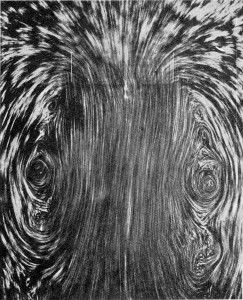“The Secret History of Diegesis”: A Talk by Elaine Freedgood
MONDAY, MARCH 31, 5 PM – 7 PM (300 WHEELER HALL, UC BERKELEY)



Denotatively, Technically, Literally
The Literary and Its Outsides
Tuesday, April 1, 5–7:00 pm
Geballe Room, 220 Stephens Hall
Townsend Center for the Humanities
UC Berkeley
Presenters:
Margaret Cohen (Stanford University)
Ian Duncan (UC Berkeley)
Elaine Freedgood (New York University)
Cannon Schmitt (University of Toronto)
Discussants:
Stephen Best (UC Berkeley)
Kent Puckett (UC Berkeley)
Four contributors to the current special issue of Representations (No. 125, Winter 2014), co-edited by Elaine Freedgood and Cannon Schmitt, will offer reflections on language–denotative, technical, literal–conventionally excluded from critical reading and, thus, from “literature.” Discussants include Stephen Best (editorial board, Representations, co-editor of the special issue “Surface Reading,” No. 108, 2009) and Kent Puckett (co-chair, editorial board, Representations).
Co-sponsored by:
Representations
The Doreen B. Townsend Center for the Humanities, UCB
The Nineteenth Century and Beyond Working Group, UCB
The Florence Green Bixby Chair in English, UCB
Pan-Optics: Perspectives on Visual Privacy & Surveillance
March 6, 2014; Banatao Auditorium, Sutardja Dai Hall, 10:30-4:30
Advances in drone aircraft, networked cameras, and recent disclosures about the NSA’s international and domestic surveillance activities have stimulated public protests, outrage from activists, and new policy discussions among elected leaders. This symposium will highlight emerging perspectives on visual privacy and consider the state of the art from a variety of disciplines and professions, including technology, journalism, filmmaking and the arts.
Among the many presenters and panelists are Rebecca MacKinnon, Senior Research Fellow at the New American Foundation; Trevor Paglen, artist and social scientist; Ken Golberg, Faculty Director of the CITRIS Data & Democracy Initiative; and Kriss Ravetto, Director of the Mellon Research Initiative in Digital Cultures at UC Davis and author of the “Shadowed by Images: Rafael Lozano-Hemmer and the Art of Surveillance” (Representations 111, Summer 2010).
For further information and to register, visit bit.ly/pan-optices2014.
The way we once learned history is now history.
Representations editorial board members David Henkin and Rebecca McLennan have just published a new US history survey, Becoming America: A History for the 21st Century.
For literary readers, the categories of the denotative, literal, and technical do not, cannot, or should not exist. No language can be denotative or literal for us, since language, above all literary language, never means what it says, pace recent attempts to declare otherwise. A purely technical language would be the opposite of the language of the literary text: operational in precisely the way the literary text is not. We do not use Heart of Darkness as a sailing manual or a handbook for the extraction of natural resources from colonized places, and we have no doubt that those who treat Thomas Hardy’s novels as travel guides to southwestern England are missing the point (although a large tourist industry does thus operationalize them, and quite successfully)….
–Elaine Freedgood and Cannon Schmitt
Continue reading this introduction to Representations 125, the special issue Denotatively, Technically, Literally, here.
SPECIAL ISSUE: Denotatively, Technically, Literally
Edited by Elaine Freedgood and Cannon Schmitt
ELAINE FREEDGOOD AND CANNON SCHMITT
Denotatively, Technically, Literally
IAN DUNCAN
George Eliot’s Science Fiction
ELAINE FREEDGOOD
Ghostly Reference
CANNON SCHMITT
Technical Maturity in
Robert Louis Stevenson
RACHEL SAGNER BUURMA AND LAURA HEFFERNAN
Notation After the ‘‘Reality Effect’’:
Remaking Reference with
Roland Barthes and Sheila Heti
MARGARET COHEN
Denotation in Alien Environments:
The Underwater Je Ne Sais Quoi
Must historical novels … be held to a higher truth standard because they are dealing, overtly, with history rather than story, even if that history is as horrific as that of the Holocaust?
Taking off from Thomas Hardy’s pronouncement that the “mixing of fact and fiction in unknown proportions” amounts to “infinite mischief,” Carol Gluck considers the tension between fact and fiction in her lively opinion piece for Representations 124, “Infinite Mischief? History and Literature Once Again.”
CAROL GLUCK is the George Sansom Professor of History at Columbia University, specializing in the history of modern Japan. She is co-editor with Anna Tsing of Words in Motion: Toward a Global Lexicon (Duke, 2009) and author of Thinking with the Past: Japan and Modern History (University of California, forthcoming).
“Why is it that we try to achieve new insights, new knowledge, new design by way of making artifacts such as sketches, diagrams, and models?”
 In her essay “Parallel Lines as Tools for Making Turbulence Visible” (Representations 124), Inge Hinterwaldner, Assistant of Modern Art History at the University of Basel, addresses this question through the work of physicists Etienne-Jules Marey and Friedrich Ahlborn, both of whom made photographic attempts to depict turbulence in air and water at the turn of the twentieth century. Both scientists used parallel lines to describe their findings, yet their representations functioned differently, depending on the differing underlying conceptions from which each began.
In her essay “Parallel Lines as Tools for Making Turbulence Visible” (Representations 124), Inge Hinterwaldner, Assistant of Modern Art History at the University of Basel, addresses this question through the work of physicists Etienne-Jules Marey and Friedrich Ahlborn, both of whom made photographic attempts to depict turbulence in air and water at the turn of the twentieth century. Both scientists used parallel lines to describe their findings, yet their representations functioned differently, depending on the differing underlying conceptions from which each began.

Inge Hinterwaldner’s research interests include computer-based art and architecture, image theory, model theory, and temporality in the visual arts. Her first book is entitled Das systemische Bild (The systemic image; Munich, 2010).
Twice Written, Never Read: Pascal’s Mémorial Between Superstition and Superbia
BY HALL BJØRNSTAD
Why exactly did Blaise Pascal carry with him the testimony of a life-transforming religious experience written in two slightly different versions and hidden in the lining of his coat? By tracing the unease with which this question has been met—or most often, dodged—by 350 years’ worth of readers, this essay (recently published in Representations 124) argues that Pascal’s so-called Mémorial still today presents us with the necessity to rethink the commemorative and transformative function of texts in general.
HALL BJØRNSTAD, Assistant Professor of French at Indiana University, Bloomington, is the author of Créature sans créateur. Pour une anthropologie baroque dans les “Pensées” de Pascal (Québec, 2010; Paris, 2013) and, with Katherine Ibbett, co-editor of a special issue of Yale French Studies, “Walter Benjamin’s Hypothetical French Trauerspiel” (2014).
from “Christmas Yet To Come”: Hospitality, Futurity, the Carol, and “The Dead”
by Paul K. Saint-Amour
When Charles Dickens’s A Christmas Carol and James Joyce’s “The Dead” are mentioned together, it tends to be on regional theater websites or on lists of “great holiday tales” rather than in any more sustained context of affiliation. This essay posits a deeper kinship between these beloved stories: they are both, I suggest, serious meditations on the ethics of hospitality. Unlike the Carol, Joyce’s story dwells on hospitality as a legal and political category as well, but it does so largely by inviting the Carol’s face-to-face ethics of hospitality into the political space of occupied Dublin. That colonial setting hosts an encounter among three forms of hospitality: the social codes of invitation and limited welcome; the ethics of limitless welcome to the absolute stranger; and the call within cosmopolitan political philosophy for a universal right of hospitality. “The Dead” thinks about how these hospitalities inform, delimit, and critique one another and asks whether they can still be thought in a political context of forcible occupation. Reprising the Carol’s interest in futurity, it considers, too, what is at stake in representing—or in refusing to represent—the future political form of a present colony. By the lights of such a reading, the Carol and “The Dead” are in fact antidotes to the holiday chestnut, a genre of foregone conclusions and sealed interiors. But we will not want to sever them entirely from the season with which they are so strongly identified. Insofar as it waits for a radical discontinuity in history—for a chance to welcome what has never yet been welcomed—the expectant temporality of Christmas remains central to these stories’ critical energies.
(from Representations 98, Spring 2007)